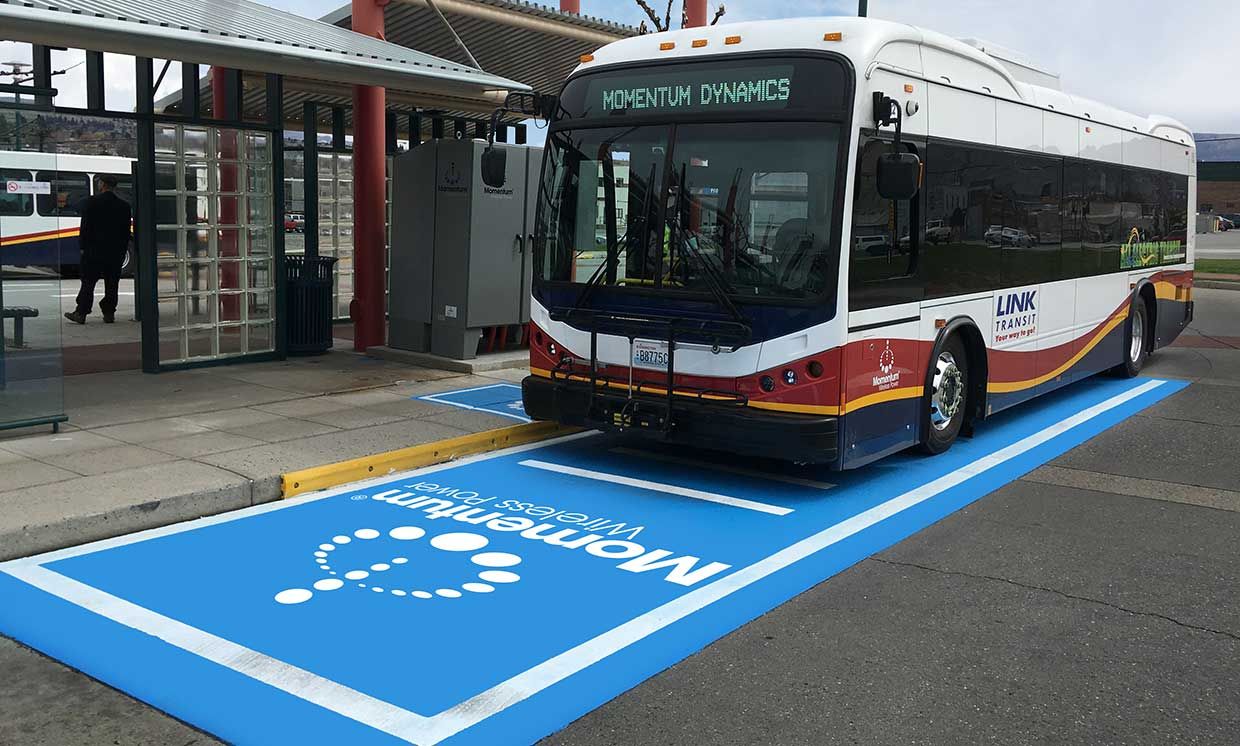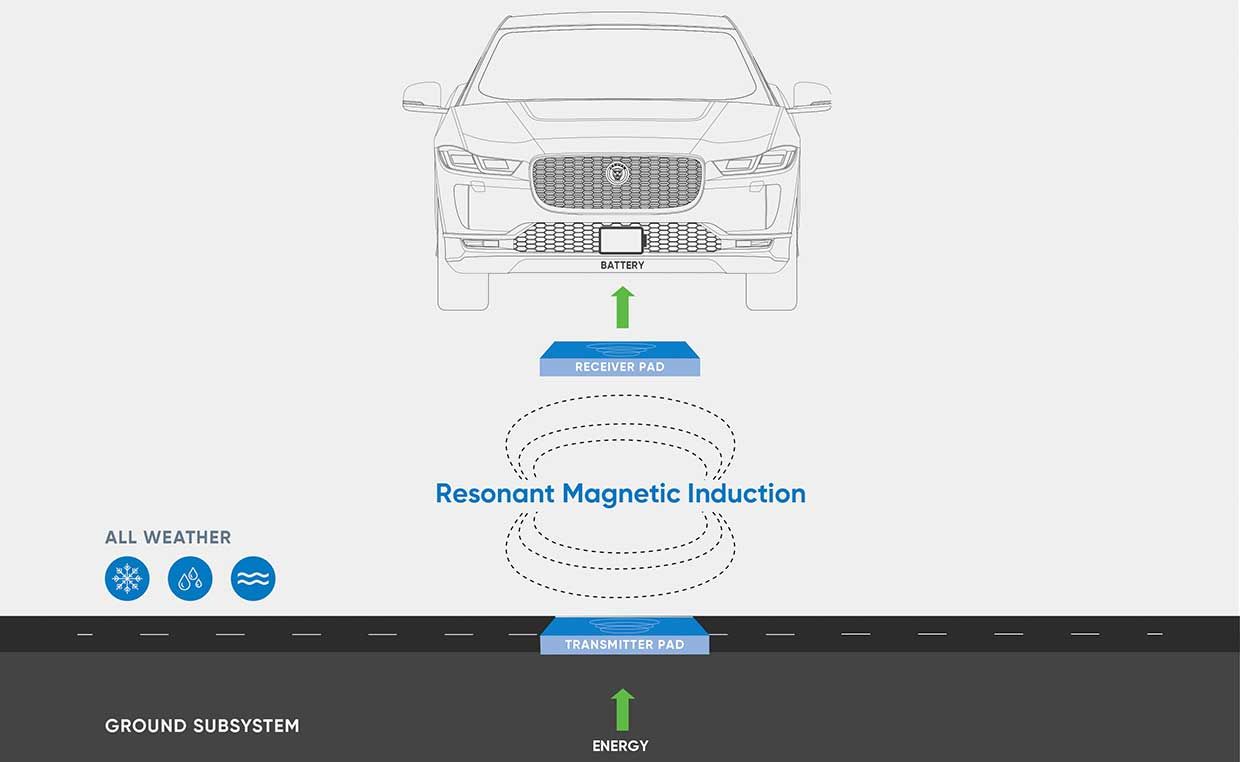Wireless Charging Tech to Keep EVs on the Go
Norway, already a world leader in EV adoption, will soon mark a world's first: An Oslo-based fleet of Jaguar I-Pace taxis that can charge wirelessly even as they queue up for passengers.
That inductive charging technology, developed by a former NASA engineer at Pennsylvania-based Momentum Dynamics, aims to solve perhaps the biggest disconnect in EVs: How to bring convenient charging to the urban masses-including apartment dwellers and drivers of taxis, buses, and delivery trucks-without clogging every inch of prime real estate with bulky, unsightly chargers. The conundrum becomes more pressing with the introduction of new electric models, and each additional government mandate for fewer fossil-fueled cars and lower carbon emissions.
A great example of that action to combat climate-change is Oslo, whose ambitious ElectriCity plan will require that all taxis produce zero tailpipe emissions by 2024-effectively banning even gasoline-electric hybrid models. The result of punitive taxes on fossil-fueled cars and enticing incentives for electric models: 50 percent of Norway's new cars are now EVs, a higher percentage by far than any nation. Norway's government has decreed that all new cars must be zero-emissions by 2025.
 Photo: Momentum Dynamics Four inductive charging pads mounted under a Link Transit bus in Wanatchee, Wash.
Photo: Momentum Dynamics Four inductive charging pads mounted under a Link Transit bus in Wanatchee, Wash. That carrot-and-stick urgency led to a partnership between Jaguar, Momentum Dynamics, Nordic taxi operator Cabonline, and charging company Fortam Recharge. The group aims to create the world's first wireless-charging taxi fleet. To that end, Jaguar is equipping 25 I-Pace SUVs with Momentum Dynamic's inductive charging pads. The pads, which are about 60 cm square, are rated at 50 to 75 kilowatts. As the cars work their way through taxi queues, the Jaguars will stop over a series of inductive coils embedded in the pavement. Using resonant magnetic coupling operating at 85 hertz, a charging pad will route enough energy to a taxi's batteries add about 80 kilometers of range for every 15 minutes hovering over the inductive coils-with no physical plugs or human hookup required.
Rather than fill batteries to the brim, the idea is to replenish them in shorter bursts whenever the opportunity arises.
The concept is grazing, rather than guzzling," says Andrew Daga, chief executive of Momentum Dynamics. You just keep adding energy back in as you need it."
Daga argues that current charging models-including the one car, one plug" idea and the reliance on ever-more-potent DC chargers that can degrade battery life-are ultimately unworkable for congested cities, mobility fleets, and impatient drivers or riders.
More frequent interactions with the grid are necessary," Daga said. It's all about thinking differently about how fueling is going to be done in a world of electric vehicles."
The company's breakthrough was born from outer space and inner snow. Daga's co-founder, Bruce Long, who died in 2018, was an electrical engineering professor at Bucknell University. During Antarctic expeditions to measure glacial activity for Penn State's geophysics program, brutal elements inspired a wireless solution for recharging electronic equipment. Fine snow kept blowing into Long's sensitive instruments whenever their cases were cracked open to replace batteries. Daga, who had worked on the 35-meter-long solar power arrays of NASA's International Space Station, had already been envisioning ways to reduce their weighty aluminum cabling. That sparked the wireless energy transfer idea that's the basis for Momentum Dynamics' current project.
The company is also collaborating with China's EV giant Geely, which also owns Volvo and Lotus. Momentum executives say they've also struck a deal with an unnamed European manufacturer to produce a wireless charging urban delivery truck.
 Photo: Momentum Dynamics A Link Transit Bus parked on the corresponding charging pad
Photo: Momentum Dynamics A Link Transit Bus parked on the corresponding charging pad This is just the latest turn in the road for Momentum Dynamics. In 2015, the company began proving its concept with electric bus trials in four U.S. cities. The transit trials featured a Chinese-built BYD bus in Wenatchee, Wash. that slurped energy from a charging pad installed along its route at a rate of 200 kilowatts. That's on par with some of the fastest DC chargers, enough to keep the bus in 24/7 operation, without ever going back to the garage" to recharge, Daga says.
Daga points out that taxi or ride-hailing drivers are genetically disposed to avoid downtime-whether that means waiting in line for gasoline pumps or detouring for lengthy charges at depots. With an inductive system, they won't lose a single minute of revenue time charging their vehicle."
The company claims its technology delivers 94-percent charging efficiency, which holds steady as scalable power climbs to 200 or even 350 kilowatts. That's a winning contrast with DC fast chargers, whose efficiency drops sharply at higher power because of massive resistance and the resulting heat that demands liquid-cooled cables, which themselves create more energy losses.
 Image: Momentum Dynamics
Image: Momentum Dynamics It's the perfect charging technology," said Morgan Lind, chief operating officer of Recharge Infra, a division of Fortam. Recharge Infra tabbed Momentum Dynamics after learning it could deliver 50 kilowatts or more through a roughly 18-centimeter air gap between vehicle and pavement-a huge improvement over companies that promised no more than 11 kilowatts.
Backers cite several spin-off benefits. With systems buried entirely underground, the plan eliminates: chargers to compete for prime parking space or sidewalks; moving parts and worries about vandalism or damage from elements; and wired infrastructure, including unsightly towers and arms for electric buses, to pollute the view.
It makes the experience of refueling invisible," Daga said. We could get clean cities and clean streets at the same time."
Furthermore, says Daga, inductive systems will deliver a daisy chain of gains. With enough charging pads, they could keep vehicle batteries in a permanent sweet spot" between 75 and 85 percent capacity, avoiding deep cycling that kills batteries before their time. Largely freed from range concerns, EVs could carry smaller battery packs, trimming their daunting weight and cost, while further boosting energy efficiency.
For taxi fleets or passenger cars, Momentum Dynamics is developing software to track even the briefest charging events and bill customers automatically, similar to an automated tolling system. The company has also developed a near-field communication system, which would allow autonomous cars to align and connect with charging pads. Bi-directional charging could let cars contribute supplementary power to the grid.
Lind says the Jaguar taxis should start running their meters, and no-fuss chargers, by year's end. Lind called Norway-with five million residents, but a determination to wean itself off of fossil-fueled vehicles-an ideal, if tiny, test bench.
We are an extremely small country, but we see that we can be a guiding star to many other countries," says Lind. The avalanche of EVs is coming, and there's no stopping it."